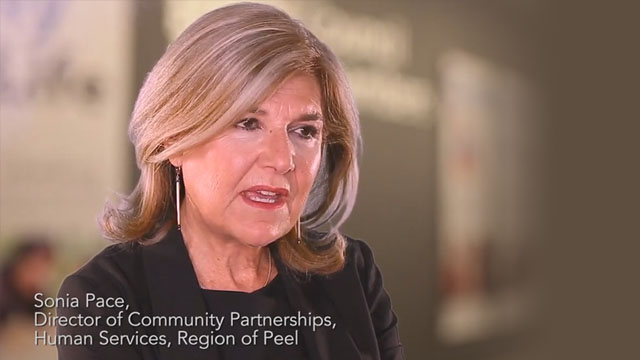Poverty in Peel at a glance
Statistics show that poverty in Peel is complex and multi-dimensional.
We define poverty as:
Peel individuals and families experiencing poverty struggle due to limited access to income, support, and resources. Poverty is not only about income, but also the inability for individuals and families to live independently, focus on wellness, and be involved in community life.
Poverty continues to be a complex and multi-dimensional issue in Brampton, Caledon, and Mississauga.
We know this from:
- People's experiences.
- Wait lists for affordable housing.
- The number of individuals and families using shelters and food banks.
- The number of people accessing subsidized programs.
- Shrinking middle class neighbourhoods.
- The change in the average individual income for people aged 15 and older.
- The rise in precarious, unstable employment, particularly for racialized groups.
- The rise in housing, childcare, and food costs.
Watch to learn more about poverty in Peel and how we're reducing poverty together:
Other information
Demographics
- 123,660 (8.6%) of Peel's population live in poverty, including 27,900 (9.5%) of children 0-17 years.
Employment and income supports
- The unemployment rate in Peel is 6.4%, which is higher than the provincial rate of 5.6%.
- The Peel youth unemployment rate is 14.4.%, which is higher than the provincial rate of 11.5%.
- 48% of those employed in Peel work only part of the year or part time.
- 29,962 persons in Peel receive Ontario Disability Support Program (ODSP) benefit (as of 2022). This includes Assistance for Children with Severe Disabilities (ACSD).
- The Monthly Social Assistance Entitlement for a single individual is $733.
- The average monthly Ontario Works (OW) households assisted in 2022 was 12,530.
Core Housing Need (CHN)
Core Housing Need* measures whether a household experiences problems relating to affordability (‘affordable’ is defined as paying less than 30% of income on shelter costs), suitability (enough space for the composition of the household), or adequacy (housing in good repair).
91K households in Peel are in CHN. Approximately 19% of these households are currently being served.
- Black households are the most likely to be in CHN compared to all other households.
- Households that immigrated to Peel within the last 5 years are 150% more likely to be in CHN.
Children and childcare
- The Province’s annual income cut-off for families to receive full child care subsidy (no cost) is $20,000.
78% of children receiving subsidy are already receiving child care for $10 or less a day. This means that even with the Canada-Wide Early Learning & Child Care (CWELCC) program, these families would not be able to afford child care without subsidy.
Food
- In 2021, 19.8% of Peel residents were marginally, moderately, or severely food insecure**.
- Marginal food insecurity means there's just one indication of difficulty with income-related food access, such as worry about running out of food or limited food selection.
- Moderate food insecurity is when a person is forced to compromise the quality or quantity of food consumed (or both).
- Severe food insecurity means a person’s food intake is reduced or they experience disrupted eating patterns.
Living wage
- Peel Region's 2022 living wage rate was $23.15.







